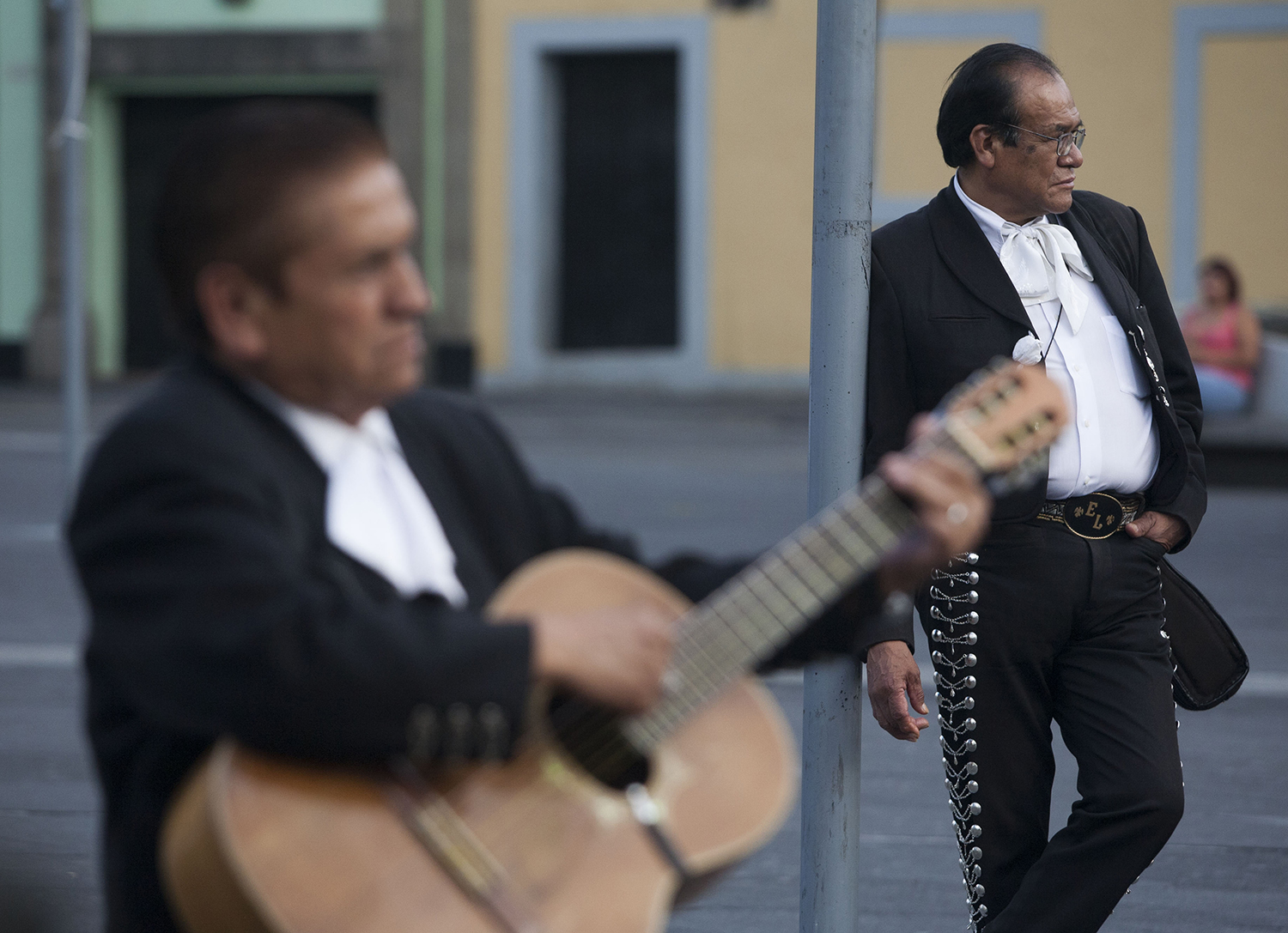Mexico City's mariachi temple

The singer pumps the room full of his baritone voice, two trumpets cry out, and guitarists strum a steady, stringy beat while the guests drinking tequila whistle their loud approval.
It's a Wednesday evening in the mariachi temple known as Salon Tenampa. In the chaos of sound, a grinning couple spins on the dance floor and the musicians sweat in their dark blue uniforms adorned with gold and silver.
Located in Mexico City's Plaza Garibaldi, the Salon Tenampa has attracted visitors for 90 years from across Mexico and from around the world. To mark this year's anniversary in November, the restaurant has opened a small bar that overlooks the plaza, a traditional gathering spot for mariachi bands where musicians sometimes play cards or check their cellphones as they wait for potential customers.
Norteno musicians in dark cowboy hats and white-clad jarocho groups playing music from the Gulf state of Veracruz are also found on the square.
Inside Tenampa, elaborately cut pastel-colored pieces of paper hang in rows from the ceiling like festive little flags. Drunken patrons sing along with the mariachis or test their resolve with an electroshock machine called "los toques."
Behind the wood-trimmed bar, a plaque bears the name of the restaurant's founder, Juan I. Hernandez, and his portrait gazes down on bartenders in black aprons and patrons seated on black-leather stools. Hernandez brought the traditions of tequila and mariachi to Mexico City from his native Jalisco state and they've filled the restaurant with partiers since 1925.
"This is considered to be the home of mariachi," and is among the oldest restaurants on the plaza, said Cesar Coronado Ferrer, a singer who has performed at Tenampa for 30 years. The establishment's walls bear murals depicting mariachi legends such as Pedro Infante and Javier Solis.
"It's like a symbol of Mexico," he said, pointing out that UNESCO named mariachi music an "intangible cultural heritage" in 2011.
What makes the restaurant special, is "the history that we have," said Carlos Alwazan Perez, who has managed the restaurant for eight years. "The people who have passed through here: the singers, the composers."
Behind the bar, Abraham Manilla mixes a popular "ponche de granada," a cocktail of pomegranate juice, red wine, tequila, and a dash of chopped nuts served in a clay mug.
"Here, visitors want the experience of classic Mexico in the music, the food, and the drinks," the bartender said. "At least four songs were written here in the restaurant."
Text from the AP news story, Mexico City Cantina, a Mariachi Temple, Celebrates 90th Year, by Tim Paterson.
Spotlight is the blog of AP Images, the world’s largest collection of historical and contemporary photos. AP Images provides instant access to AP’s iconic photos and adds new content every minute of every day from every corner of the world, making it an essential source of photos and graphics for professional image buyers and commercial customers. Whether your needs are for editorial, commercial, or personal use, AP Images has the content and the expert sales team to fulfill your image requirements. Visit apimages.com to learn more.
Written content on this site is not created by the editorial department of AP, unless otherwise noted.
AP Images on Twitter | AP Images on Facebook | AP Images on Instagram




















